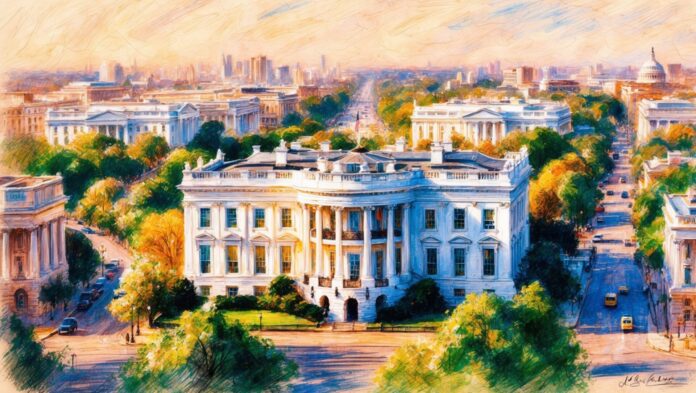In the 2024 U.S. presidential election, Donald Trump’s victory stunned many experts. While pollsters and pundits scrambled to explain what happened, the answer lies in something far more fundamental: a cultural disconnect and marketing failure on the part of the Democrats. This wasn’t just a contest of policy positions; it was a cultural clash rooted in vastly different perspectives and worldviews. Trump’s success was no accident. Reflecting on a conversation I heard on YouTube between Rory Sutherland and Chris Williams (https://www.youtube.com/watch?v=v5oSIqqxLaA), Rory’s solid case for the fact that President Trump’sappeal came from his ability to communicate authentically with working-class and middle-class voters. At the same time, the Democrats got lost in a feedback loop of self-righteousness and narrow cultural values, exacerbated by the echo chamber of mainstream media that reinforced the message for insiders, keeping them ignorant of the reality that was rapidly changing around them. This fits in beautifully with the premise behind the book How Trump Played the Media…Again. The marketing failure that was the Harris 2024 campaign is a lesson for campaigns of the future.
Cultural disconnect and elitism, social group dynamics, and political marketing failure sealed Trump’s victory.
Understanding Cultural Disconnect Between the Haves and Have-nots
One of the most enlightened insights into America’s cultural divide comes from a conversation by Rory Sutherland and Chris Williams about his talk with Rick Rubin. He described Rick’s childhood as “bipolar”, split between two radically different environments. During the week, he lived on Long Island, surrounded by blue-collar families, enjoying a life where people liked things simply because they liked them. On weekends, he was thrust into Manhattan’s cultural elite—an entirely different world obsessed with status, appearances, and fitting in with intellectual or artistic trends.
This divide serves as a perfect metaphor for what transpired in 2024. Blue-collar America embodies Long Island—authentic, grounded in personal preference and lived experience. In contrast, progressive urban elites signify Manhattan—a bubble where opinions are curated for social credibility instead of reflecting genuine belief.
In places like Long Island, people unapologetically enjoy country music, fast food, and NASCAR. There’s no pressure to conform to “refined” tastes. As Rory Sutherland pointed out, “Blue-collar food looks worse but tastes better than posh, or upper-class food.” This freedom to embrace subjective taste is crucial to understanding why Trump resonated so deeply with working-class voters.
Trump’s campaign tasted better than blue—collar food:straightforward, relatable, and culturally familiar. The Democrats, meanwhile, offered a more “refined” product that failed to connect emotionally with voters outside urban strongholds.
The Marketing Failure of the Democratic Party
To fully understand Trump’s success, you must examine the Democrats not merely as a political party but as an abject marketing failure. Effective marketing hinges on understanding your audience’s desires, pain points, and cultural context. Unfortunately for the Democrats, they have completely lost touch with significant portions of the electorate.
Being deeply rooted in urban environments creates a skewed worldview. When you inhabit a dense cultural bubble, your opinions are shaped not by reality but by the desire to conform to your primary social group. In cities like New York or San Francisco, progressive views often serve as symbols of social belonging rather than true reflections of belief.
As mentioned by Rory, Jillian Tett, in her book The Silo Effect, describes how closely-knit groups create blind spots that hinder them from perceiving beyond their immediate surroundings. This is exactly what occurred with the Democratic Party in 2024.
They failed to recognize the diversity within the working class and minority communities, choosing instead a one-size-fits-all approach based on an artificial worldview. This perspective assumes that all minorities think the same, that working-class voters are remnants of the past, and that the only way forward is through urban, coastal elites.
One event at Madison Square Garden stands out as a perfect illustration of this misinterpretation, as noted by Rory. When comedian Tony Cliff made a joke about Puerto Rico, the audience assumed that all Latinos would react the same way. However, there are significant differences within the Latino community, just as there are variations within any ethnic group.
This form of identity essentialism—the notion that all members of a group share identical thoughts and behaviors—alienates voters who do not conform to these stereotypes.
Trump’s Advantage: Freedom from Cultural Constraints
Donald Trump’s brilliance lies in his ability to defy these cultural disconnects and constraints. While the Democratic Party insisted that voters “buy the whole album,” Trump presented something much more appealing: the freedom to enjoy what you like without judgment.
Unlike his opponents, Trump didn’t ask voters to conform to an ever-growing list of ideological positions. He let them embrace their own cultural preferences, even when those preferences didn’t align with the approved urban narrative.
For example:
- Trump welcomed blue-collar tastes—country music, fried chicken, and stock car racing—without trying to dress them up or make them fit into a progressive framework.
- He spoke to religious voters in their own language, acknowledging their beliefs without condescension.
- He didn’t expect voters to align on every issue. You could support him on trade but disagree with him on foreign policy, and that was okay.
This was in contrast to the Democrats, who often demanded complete ideological alignment, if you supported their economic policies but disagreed on cultural issues, you were treated as an outsider. This insistence on ideological purity created a “bizarre hall of mirrors,” as Rory Sutherland termed it, where opinions became subordinated to an artificial worldview.
The Narcissism of Small Differences
The psychological concept known as “the narcissism of small differences“ explains how groups with slight disparities often engage in the fiercest conflicts. This became apparent during the 2024 election, when minor cultural disagreements were exaggerated dramatically.
Consider the “Latinx” controversy, for example. While it’s a term commonly used in academic and activist circles, most Hispanic voters do not identify with it. In fact, many find it alienating. Yet, Democratic messaging often assumes that all Latinos embrace the term, failing to recognize the cultural nuance within the community.
Likewise, the Democrats’ failure to acknowledge regional cultural disconnect made them appear out of touch. In contrast, Trump recognized that local culture is important. A voter in Ohio cares about different issues than a voter in Los Angeles—and that’s perfectly fine.
Elon Musk and the ‘Signal Boost’
Another critical factor in Trump’s success was his ability to attract unconventional allies like Elon Musk. While Musk didn’t officially endorse Trump, his role as a cultural disruptor helped amplify Trump’s campaign. Musk’s presence in the public discourse provided Trump with a degree of legitimacy among tech-savvy, younger voters who might have otherwise dismissed him. In a world dominated by corporate messaging and sanitized media narratives, Musk’s anti-establishment rhetoric aligned seamlessly with Trump’s populist brand. As Rory Sutherland noted, “Elon Musk was a clever signal boost.” His maverick persona enabled Trump to extend his reach into communities that may have traditionally been outside his influence base.
What the Democrats Can Learn
The 2024 election isn’t just a lesson in political failure—it’s a wake-up call for anyone involved in marketing, communications, or cultural disconnect analysis. Here are some key takeaways to avoid such marketing failure:
1. Understand Your Audience
Stop viewing voters through a narrow ideological lens. America is diverse—not just racially but culturally, regionally, and economically.
2. Abandon Ideological Purity Tests
Allow people to disagree with parts of your platform without being cast out. Trump’s success was partly due to his flexibility—future campaigns should take note.
3. Embrace Authenticity
People can sense when they’re being sold something fake. Authenticity beats polished perfection every time.
4. Respect Regional Culture
Not every region thinks like New York or Los Angeles. Campaigns that ignore regional culture do so at their peril.
A Cultural Disconnect Recalibration
Trump’s victory in 2024 wasn’t just about politics—it encompassed culture, authenticity, and the ability to convey messages that resonate on a deeply personal level. The Democrats’ failure to adapt and their inability to escape their ideological bubble left a wide-open door for Trump to walk through.
If there’s one thing the last three years have shown, it’s that underestimating cultural nuance is a serious mistake in politics. Future campaigns must learn to listen, adapt, and reconnect with the voters who’ve been overlooked—or risk facing the same fate in 2028.




